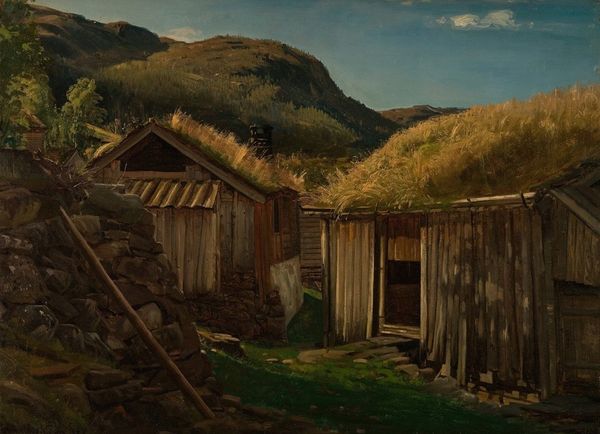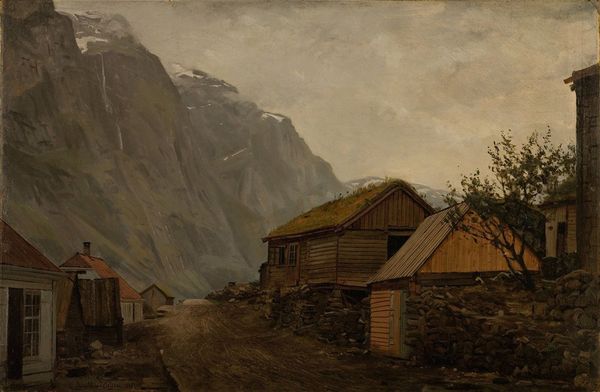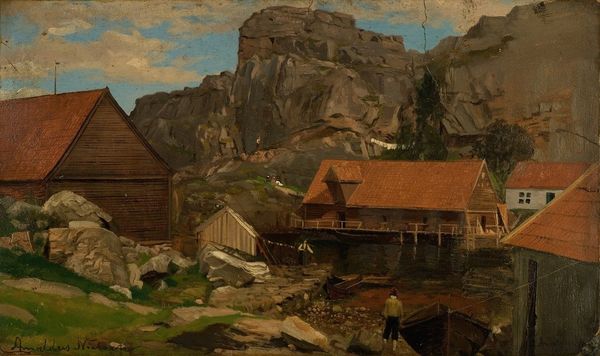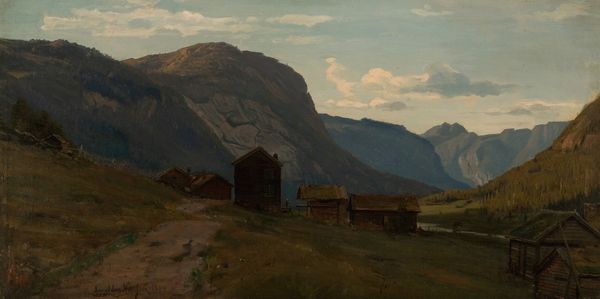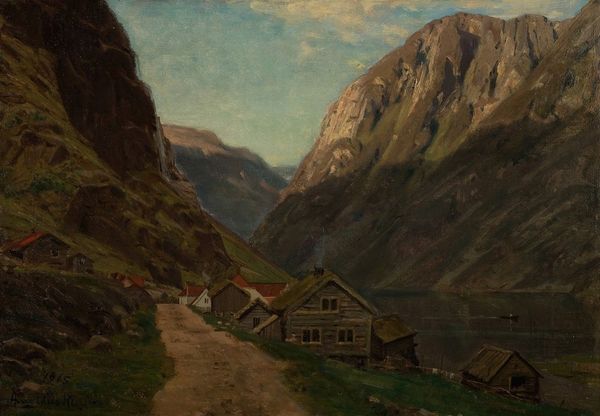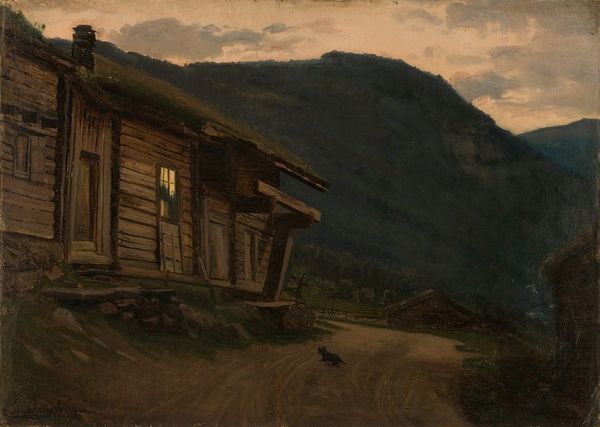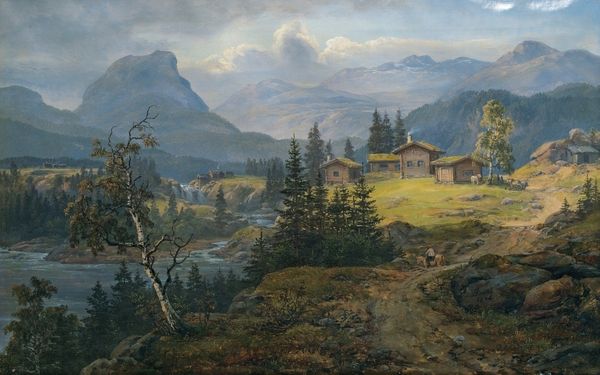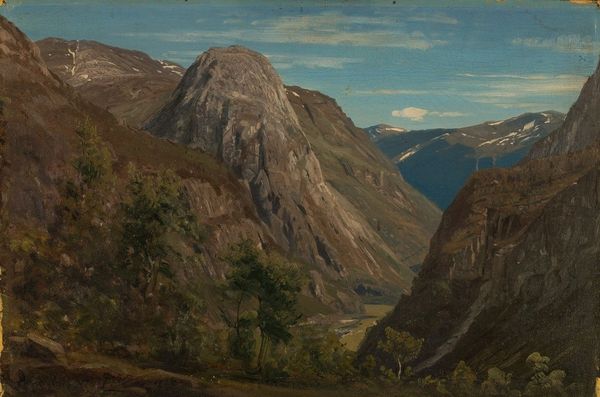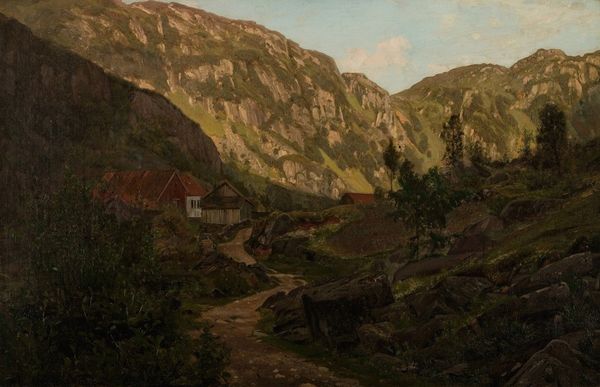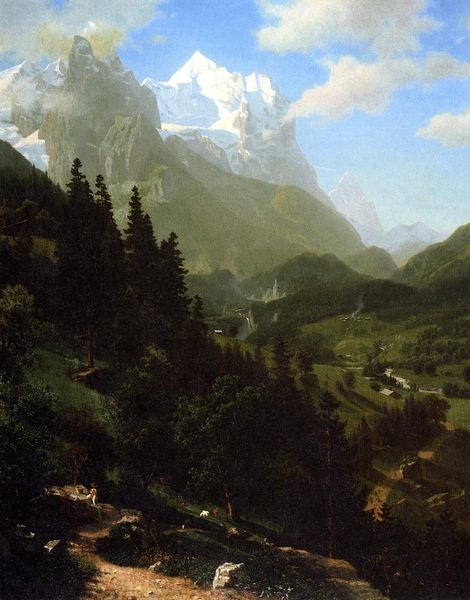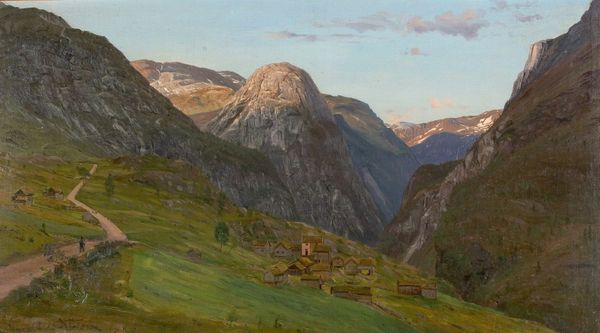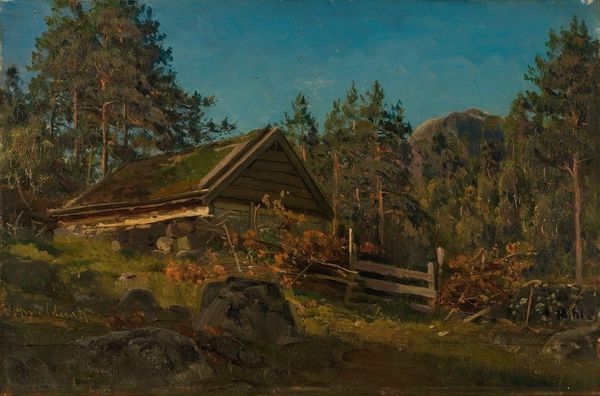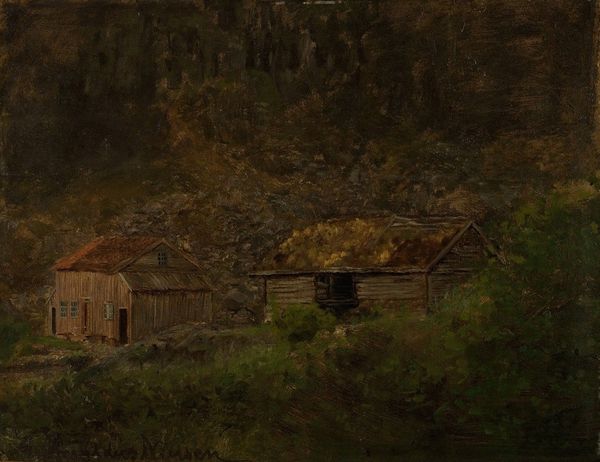
Copyright: Public Domain: Artvee
Curator: I find myself immediately drawn to the raw scale of those mountains against the human-sized structures. There is a real contrast happening there. Editor: Indeed. We're looking at Amaldus Nielsen's "Fra Gudvangen", painted in 1865. It is oil on canvas and offers an interesting window into 19th-century Norway. One cannot miss how Nielsen uses this landscape to tell the story about the intersection between society and nature. Curator: Right, that intersection is compelling. Consider the wooden structures with their living roofs— sod, or maybe turf. Were those materials sourced locally or indicative of wider building material trends in that particular region and period? I wonder about the labor and access to transport necessary to implement them. Editor: An astute observation! These dwellings certainly echo the vernacular architecture adapting to a rather severe environment, reflecting not only local resources but also the socio-economic realities of the inhabitants at the time. Such detailed depictions served as cultural documentation during a period of increasing national identity. The picturesque captured became politicized and celebrated the beauty and solemnity of Norway. Curator: Politicized landscapes, I like that perspective. The subtle integration of dwellings— how it nearly disappears into the ground— makes me think about sustainability before its modern interpretation. Are we romanticizing a pre-industrial relationship with materials? Editor: That's the tightrope that artworks such as these ask us to walk. We gaze upon this through the lens of our contemporary understanding, viewing both nature's dominance and also human settlement in a particular political climate that impacted what and how Nielsen painted. There is very little in the painting indicating human activity, which is a reflection of Nielsen’s view that Norway was at its best in its natural state. Curator: And Nielsen, a trained artist, carefully mixing his pigments and mastering his brushstrokes in an act of transforming raw material into commentary. We get a layered reflection not only of Gudvangen in the mid-19th century, but of the very means through which society sought to record and understand itself. Editor: It truly provides layers for both analysis and perhaps even contemplation, doesn’t it? Curator: Absolutely, and the dialogue it spurs highlights how materials and societal conditions become forever entwined.
Comments
No comments
Be the first to comment and join the conversation on the ultimate creative platform.
